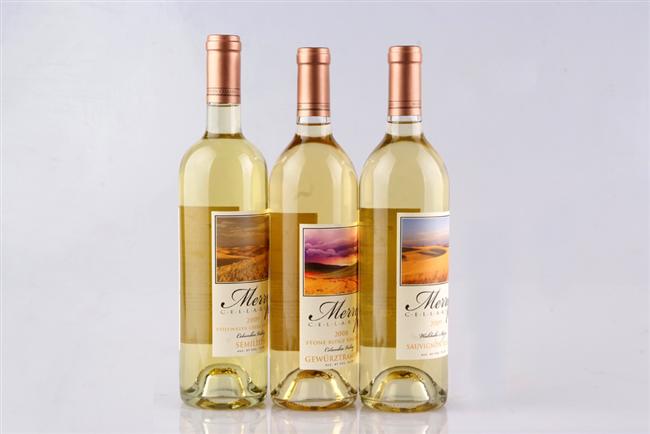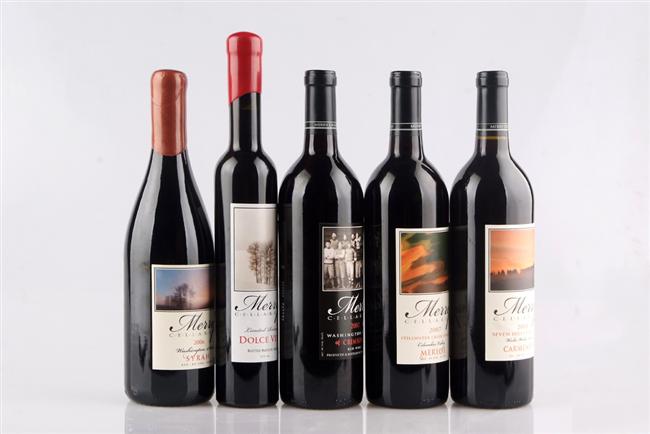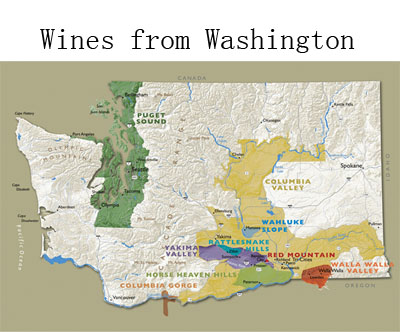来自华盛顿州的名庄Merry Cellars, 由庄主讲解美国华盛顿州产区。
同时品尝5款来自Merry Cellars的佳酿。
美食记会员80元/人。
酒单:
| 白葡萄酒 |
Semillon |
赛蜜隆 |
2009 |
美国 |
Merry Cellars |
| 白葡萄酒 |
Gewurztraminer |
格乌·琼瑶浆 |
2009 |
美国 |
Merry Cellars |
| 红葡萄酒 |
Carmenere |
佳美娜 |
2008 |
美国 |
Merry Cellars |
| 红葡萄酒 |
Merlot |
美露 |
2009 |
美国 |
Merry Cellars |
| 红葡萄酒 |
Syrah |
茜拉 |
2009 |
美国 |
Merry Cellars |


Washington State has quickly grown into the second
largest producer of wine in the United States. Although
geographically limited in production capacity, Washington
State wines are renowned for their robust and distinctive
character and can be found nationally in all 50
states and internationally in more than 40 countries.
Standing over 4,000 meters above sea level, the Cascade
Mountains to the east of Seattle act as a curtain to shield
the rest of the State from the moisture of the Paci!c Ocean
in the west. "is gives the eastern half of Washington State
its dry, desert climate featuring cold winters and hot summers.
Carving through this arid landscape, the Columbia
River delivers snowmelt to the Paci!c Ocean from a drainage
basin the size of France; along the way, it sustains many
scattered oases and irrigational networks in the countryside.
Long daylight hours in the summer combined with dramatic
diurnal temperature shifts make the climate perfectly
suited for growing the most extreme, high-sugar content
wine grapes. "is in turn allows wines produced from these
grapes to achieve their characteristically high alcohol content.
Canopies are actively controlled by irrigation management,
allowing grapes to fully ripen and develop complex
fruit #avors, good acidity levels, and pleasing aromatics.
A unique combination of strong drainage, healthy organic
nutrient matter, and absence of nitrogen gives eastern
Washington State soils the consensus perfect conditions
for grapevines to thrive. "e lack of nitrogen in the
soil forces vines to work harder to send nutrients to the
grapes and prioritize these vascular expenditures over expanding
foliage. Sandy/rocky soils drain water further into
the earth, triggering a response for the vines’ roots to extend
deeper. "e sandy soils are also naturally hostile to
the vine-killing aphid, Phylloxera, leaving Washington
State remarkably free of this global scourge vineyard pest.
Washington State’s !rst wine grapes were planted in 1825.
By 1910, wine grapes were growing in most areas of the
state, following the path of early settlers from France, Germany
and Italy. Since Washington grape growers were
well-aware of the youth of the State’s industry in comparison
to other established wine regions around the world, a
focus was placed on strength in unity, global information
sharing, specialized academic study and old fashioned
hard work. Today, Washington State has developed into
a wold-class winemaking region and is a leader in sustainable
viticultural techniques. Representing an interface
where Old-World concepts and New-World technologies
synergize, Washington State has cultivated the perfect climate
for wine by fostering symbiotic relationships between
ideal grape-growing conditions, quality winemaking,
business innovation, lifestyle, and social responsibility.










